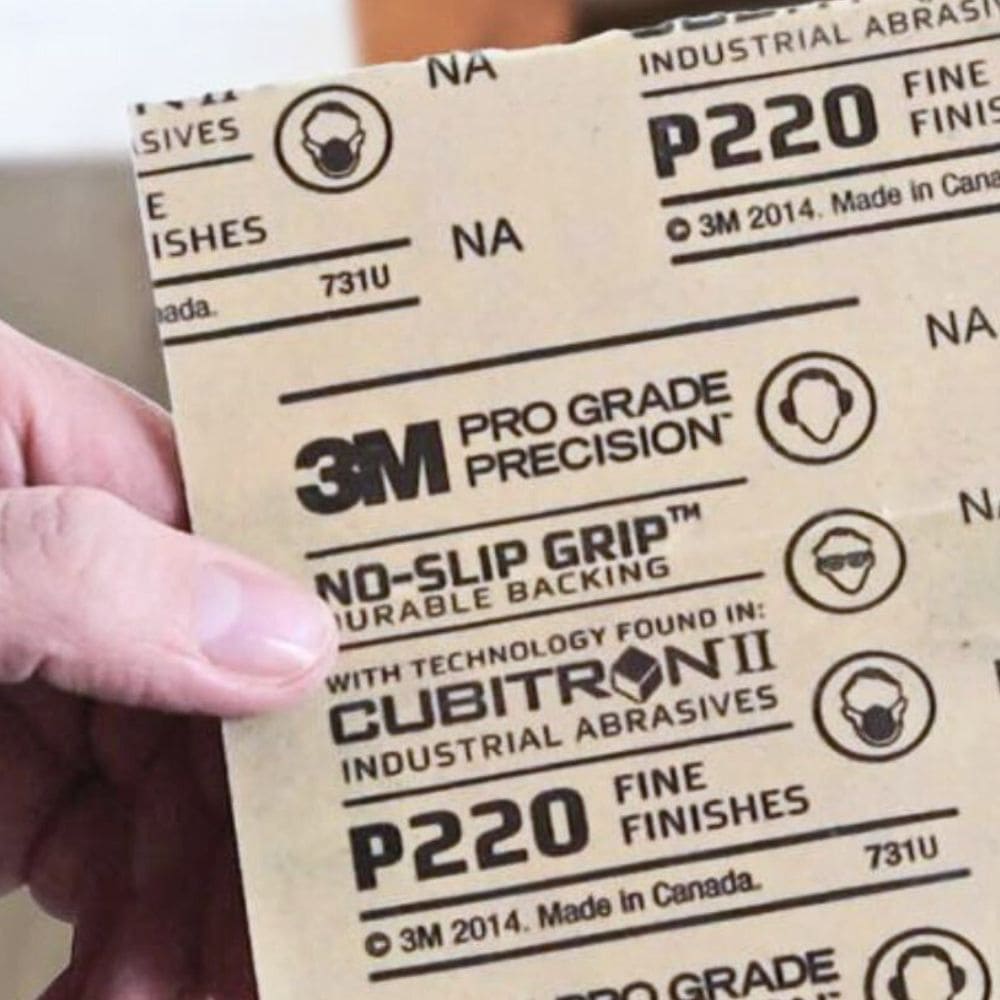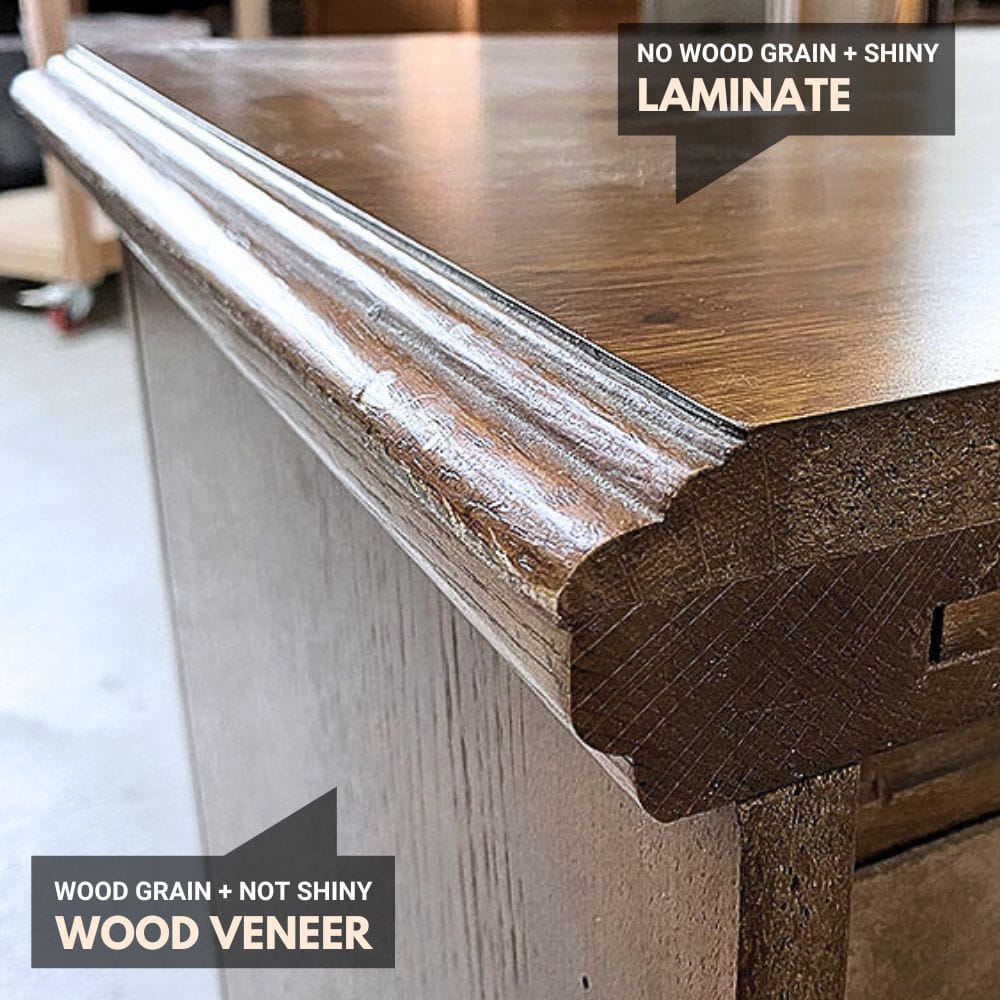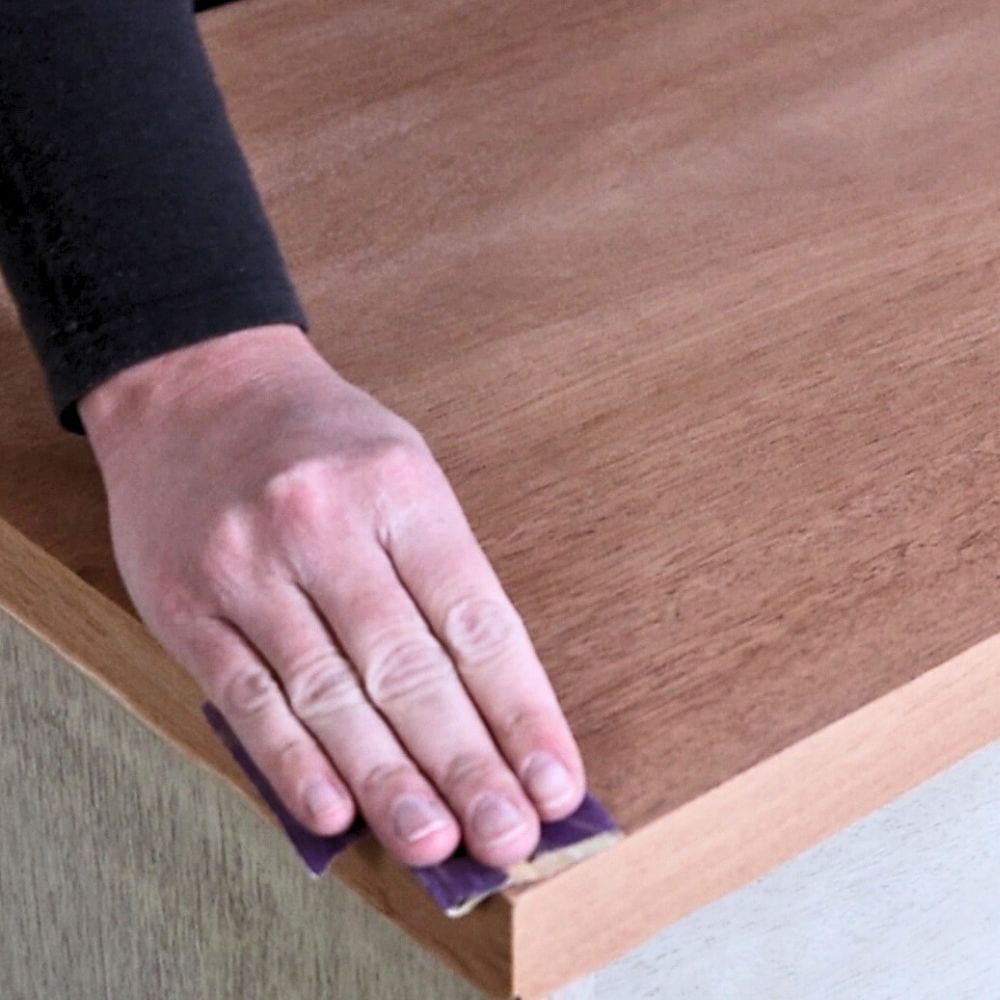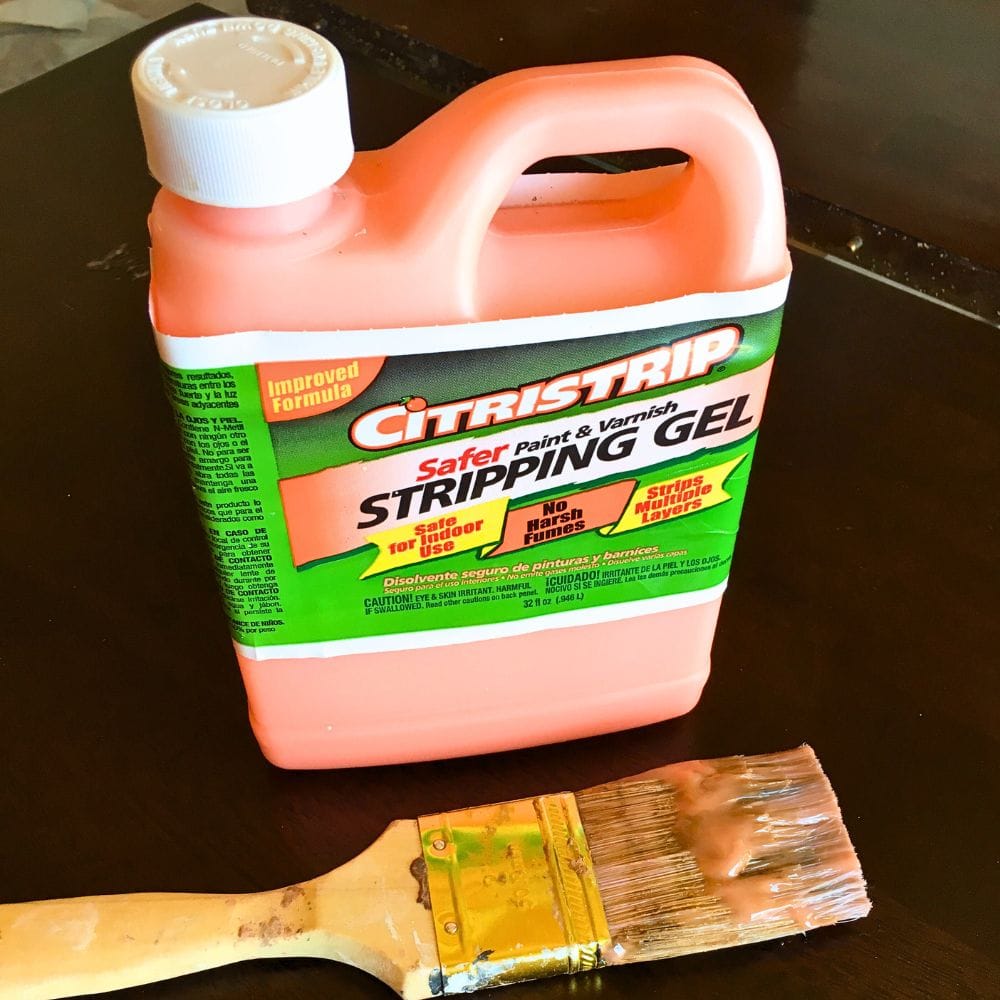Can Veneer Be Sanded
Veneer is a popular material used in furniture making and this technique has been and is still widely used today. However, with time and use, veneer furniture may lose its shine and start showing signs of wear and tear. In such cases, the question arises – can veneer be sanded? Is it possible to restore the shine and beauty of aging veneer by sanding it down?
In this post, we will explore the topic of sanding furniture with veneer and discuss whether or not it is possible to sand it.

Veneer is essentially a thin layer of high quality wood that is used to cover up inexpensive or lower-quality wood.
This helps give the furniture a more aesthetically pleasing appearance without the need for using expensive wood throughout the entire piece.
Veneer is often used on the surface of furniture pieces, such as tables and cabinets, to add a touch of elegance and sophistication.
But even if it acts as a cover up, veneer is still a crucial aspect of furniture making. It’s still a high quality material that adds value and durability to furniture.
In fact, many old furniture pieces are made with veneer and have stood the test of time. However, it’s natural that wear and tear will eventually happen.
This leads us to the main question – can veneer be sanded?
As an Amazon Associate, I earn from qualifying purchases. I also may earn from other qualifying purchases with other companies or get free product to review and use. All opinions are my own.
Can You Sand Veneer?
Yes, veneer can actually be sanded. However, it should be noted that sanding veneer requires a gentle touch and careful technique.
The thin layer of wood can easily be sanded too much or even sanded completely off if not done properly.
This is why it’s always recommended to use a fine grit sandpaper, such as 220 grit, and to sand in the direction of the grain.

It’s important to remember that veneer is not a solid piece of wood, it’s a thin layer attached to another material.
This means that when sanding, you must be cautious not to sand too deep or too aggressively.
If the veneer is already very thin, it may not be able to withstand any further sanding and could peel off completely.
Additionally, if the veneer is damaged or cracking, sanding may only make it worse. You do have alternative options – you can repair veneer with wood filler or remove veneer and replace it with a new layer.
However, if the veneer is still in good condition but just needs a refresh, then yes, you can sand it. Just make sure to take proper precautions and use gentle techniques to avoid damaging the veneer.
How to Tell if Your Furniture is Made with Veneer
But first, how do you know if your furniture is made with veneer? Well, there are a few tell-tale signs.
One way to check is by looking for a thin line on the edges of the furniture’s top. You can also check the backside of your furniture for a similar thin line of wood.
This line indicates that a thin layer of wood veneer is covering the cheaper material underneath. However, furniture manufacturers are often skilled at hiding this line, so it’s not always easy to spot.
You may have to look very closely and run your hand along the edges to feel for any slight differences in texture.

Another way to tell if your furniture is made with veneer is by looking for any inconsistencies in the wood’s grain.
Since veneer is a thin layer of wood, it may have different patterns or directions compared to the solid wood pieces.
This can be a subtle but noticeable difference that can help you determine if your furniture has a veneer or not.

How to Sand Veneer
Now onto sanding veneer. If your furniture has a thin wood veneer, the veneer may be too thin to sand. So you have to be really careful not to sand through it.
First, make sure to clean the surface of your furniture well. This will help prevent any debris or dirt from getting in the way while sanding.
Our post on how to clean furniture before painting has some great tips on how to properly do this step.
Next, use a fine grit sandpaper, such as 220 grit, and sand in the direction of the grain. If you are sanding by hand, use a light touch and try to evenly distribute pressure across the surface.
It’s always better to start with a gentler approach and gradually increase pressure if needed.

If you are using a sander, be mindful of its speed and use it on a low setting. This will help prevent any accidental damage to the veneer.
Also, be careful around the edges and corners, as these areas can be more delicate. After sanding, make sure to clean off any residual dust and wipe down the surface before applying any finish.
Removing Paint or Stain from Veneer Furniture
If you want to remove old paint or stain from your veneer furniture, you’ll need to use a chemical stripper.
Apply the stripper following the manufacturer’s instructions and let it sit for the recommended amount of time.
Then, using a plastic scraper, gently scrape off the loosened finish. You can check out our post on how to strip paint from wood furniture to learn more about this process.

Once most of the finish has been removed, you can lightly sand the surface with fine grit sandpaper to remove any remaining stubborn spots.
Be sure to sand in the direction of the grain and, again, use a light touch so as not to damage the veneer.
If you sand through the veneer, you may not be able to stain it again and may have to resort to painting it instead. So take your time and be gentle when removing old finishes from veneer furniture.
After removing all traces of paint or stain, clean and wipe down the surface before applying any new finish.

If you’re painting your newly sanded veneer furniture, our painting veneer furniture post has everything you need to know.
And if you’re restaining, check out our post on how to stain wood furniture for some helpful tips and tricks.
So yes, veneer can be sanded but it requires a gentle touch and careful technique to avoid damaging the thin layer of wood.
Make sure you know for sure if your furniture is actually veneer before you start sanding it.
And remember, if the veneer is in bad condition or too thin to sand, there are other options available to refresh your furniture.
More Sanding Furniture Tips
- Sanding For Paint Prep
- How To Sand Curved Surfaces
- Sanding Tight Places
- Sanded Through Veneer to Particle Board
- Easy Way to Sand Spindles
Follow us on YouTube to get more tips for painting furniture.
Or share your project with us on our Facebook Group and be part of our community. See you there!
